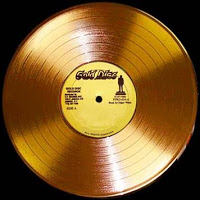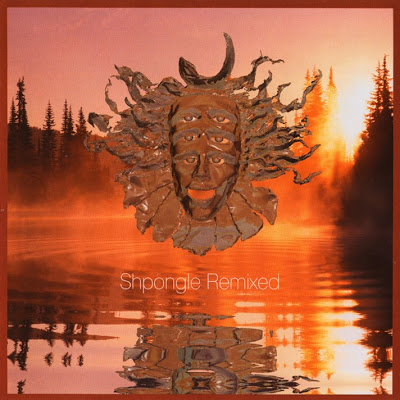Hello, well my pc is back up, though i'm still getting adjusted to windows 7, and nvidia cant find my videocard , to top that my isp cut me off as payment seems to have gone array aswell so for now i'm on some free wifi bandwidth..not very stable so it remains to be seen how much posting will be done this week. For now, this was ready to go out last week..
xxxxx xxxxx xxxxx
After working together in Perennial Divide Stephens and Jack Dangers (John Stephen Corrigan) left to form Meat Beat Manifesto (MBM), their first album was destroyed in a studiofire. They then recorded the LP Storm The Studio, which got them labeled as an industrial act. In response, they released 99%, which was more techno-influenced, in May 1990. In August of the same year, they released Armed Audio Warfare, which was an effort to re-create the lost tracks of the would-be debut album. They build a reputation with a live show that was conceived as an intense audio-visual experience, with dancers, led by choreographer Marcus Adams, in costumes designed by artist Craig Morrison and video clips accompanying live instruments, sequenced electronic instruments, and dazzling live DJing.
On 1992's Satyricon Meat Beat adopted a more mainstream electronic sound, influenced by such newly popular dance bands as Orbital, The Shamen, and The Orb, all of whom had either remixed or been remixed by MBM. The album produced the hits "Mindstream" and "Circles". However, "Original Control (Version 2)", renamed "I Am Electro" in later compilations, remains the best-known track from the album, featuring samples of recordings from the 1939 World's Fair exhibit Elektro The Robot.
In 1994 Dangers relocated from England to San Francisco, resulting in Stephens' departure from the band. Dangers continued MBM from his new home, releasing the double album Subliminal Sandwich in 1996. While this album represented MBM's major-label debut on Trent Reznor's Nothing Records, it failed to achieve the critical and commercial successes of previous releases. In 1997 Dangers recruited drummer Lynn Farmer and multi-instrumentalist John Wilson (MBM member 1995-1998 former Supreme Love Gods) to record and release Actual Sounds + Voices in 1998, which found the group's earlier flirtations with jazz fusion featured more prominently; the record included appearances by saxophonist Bennie Maupin. The album yielded the single "Prime Audio Soup" which was featured in the film The Matrix. While Jon Wilson left the band prior to the 1998–1999 tour, Farmer remains with the band as of Spring 2007. Wilson was replaced by former Consolidated programmer Mark Pistel, who also remains a contributing member.
In 2002 Meat Beat released RUOK?, another big step in the evolution of their sound and prominently featuring Dangers' newly acquired toy, the EMS Synthi 100, as well as guest contributions from turntablist Z-Trip and The Orb's Alex Paterson. In 2003 they released a remix album for Storm The Studio, followed by ...In Dub, a remix album of RUOK.
At the Center, was released in 2005, the album is a collaboration between Jack Dangers and jazz musicians Peter Gordon, Dave King, and Craig Taborn. It has been well-received by many critics.Then MBM went on a year long worldwide tour again, the first in 7 years Being renowned for making a concert not only an aural but a visual spectacle aswell this time they made use of video sampling technology that allowed the band to trigger video clips in realtime, on two large screens positioned stage front, while the band performed either sidestage or behind the screens.
Presently, the veteran composer and sound sculptor , Jack Dangers continues to stretch sonic boundaries and influence new generations of sound activists. As a premiere remixer, producer and sound designer, he has played a seminal role in defining tomorrows' music today. Prior to Meat Beat Manifesto there was Perennial Divide. Archive Things/Purged was released earler this year and features unreleased tracks and instrumental versions from Perennial Divide, together with some of the original MBM demo tracks.
MBM's ninth studio album, Autoimmune, was released on April 2008 the album features the first vocals by Dangers himself since 1998's Actual Sounds + Voices, as well as collaborations with DJ Z-Trip and MC Azeem. The album has been described as a return to an older, harder MBM sound and as a dubstep album, though Dangers has stated that he prefers not to fall into any specific genre or category with his work. Meat Beat Manifesto once more toured to support the new album with the same stage setup as the 2005–2006 tour. Meat Beat Manifesto latest album Answers Come In Dreams
xxxxx xxxxx xxxxx xxxxx xxxxx
Somewhere between the hypnotic drone of acid techno and the grating aggression of industrial metal lies Meat Beat Manifesto. On 99%, Manifesto thrives on a very original sound that takes its cue from an endless catalog of samples mixed together seamlessly over hip-hop and techno beats. Dangers creative use of sound is what makes this album stay fresh and engaging.

Meat Beat Manifesto - 99% (90 flac 279mb)
01 Now 5:19
02 Psyche-Out 4:44
03 All The Things You Are 4:40
04 Hello Teenage America 2:05
05 10 X Faster Than The Speed Of Love 5:56
06 99% 0:19
07 Dogstar Man/Helter Skelter 8:34
08 Think Fast 5:01
09 Hallucination Generation 2:40
10 Deviate 5:24
xxxxx xxxxx xxxxx xxxxx xxxxx
.
In 1997 Dangers recruited drummer Lynn Farmer and multi-instrumentalist John Wilson (MBM member 1995-1998 former Supreme Love Gods) to record and release Actual Sounds + Voices in 1998, which found the group's earlier flirtations with jazz fusion featured more prominently; the record included appearances by saxophonist Bennie Maupin. The album yielded the single "Prime Audio Soup" which was featured in the film The Matrix. While Jon Wilson left the band prior to the 1998–1999 tour, Farmer remains with the band as of Spring 2007. Wilson was replaced by former Consolidated programmer Mark Pistel, who also remains a contributing member. Dangers smartly opens the door to these and other musicians, he is the master arranger of the genre, orchestrating found sounds, vintage noise, an obscure library of samples, and always a rich collage of rhythm; he's typically the puppet master, but here he becomes a member of the band.

Meat Beat Manifesto - Actual Sounds + Voices (98 flac 491mb)
01 Everything’s Under Control 0:43
02 Prime Audio Soup 6:17
03 Book Of Shadows 5:43
04 Oblivion/Humans 5:52
05 Let's Have Fun 3:30
06 The Tweek 2:25
07 Acid Again 5:47
08 Let Go 4:44
09 Where Are You?/Enuff 5:59
10 Hail To The Bopp 4:40
11 3 Floors Above You 5:00
12 Funny Feeling 6:10
13 The Thumb 10:47
14 Wavy Line 1:17
15 Wildlife 4:03
xxxxx xxxxx xxxxx xxxxx xxxxx
Ben Stokes (member of MBM) aka Dimensional Holofonic Sound or more widely known as D.H.S. best known for the cult techno anthem 'House Of God', a track which still gets the regular remix treatment 20 years on. Here we get 15 sample heavy tracks of space travel related wackiness. From public information films to the B-movie where each will differ from the previous in most notably, genre. Attention Earth People really comes into play by the sheer diversity going on here and it doesn't wane on the attention span either. It's obviously well produced, full of humour and colossal in bounce and groove.

Dimensional Holofonic Sound – Attention Earth People ( 383mb)
01 Intro 0:48
02 Fascinating 3:50
03 Attention Earth People 4:45
04 Station Lunar 3 3:58
05 I Am Your Control 4:21
06 Uranus 4:15
07 1963 3:30
08 Watch The Sky 5:13
09 Venus The Morning Star 4:46
10 As High As It Can Go 3:47
11 Mars 4:45
12 Intergalactic Travel 4:30
13 Intergalactic Dub 4:54
14 Suspended Animation 4:28
15 Atomic Clock 5:42
xxxxx xxxxx xxxxx xxxxx xxxxx
elsewhere on this blog (Rhotation 1, 43)
Meat Beat Manifesto - Satyricon ( 92 ^ 145mb)
Meat Beat Manifesto - Storm The Studio 01-08 (^ 93mb)
Meat Beat Manifesto - Storm The Studio 09-14 (^ 72mb)
Meat Beat Manifesto - Subliminal Sandwich 1 ( ^ 99mb)
Meat Beat Manifesto - Subliminal Sandwich 1.5 ( ^ 99m)
Meat Beat Manifesto - Subliminal Sandwich 2 ( ^ 99mb)
Meat Beat Manifesto - RUOK? 02 61 min ^ 137mb)
Meat Beat Manifesto - Mutations ( 78min * 99mb)
***** ***** ***** ***** *****
xxxxx xxxxx xxxxx xxxxx xxxxx
xxxxx xxxxx xxxxx
After working together in Perennial Divide Stephens and Jack Dangers (John Stephen Corrigan) left to form Meat Beat Manifesto (MBM), their first album was destroyed in a studiofire. They then recorded the LP Storm The Studio, which got them labeled as an industrial act. In response, they released 99%, which was more techno-influenced, in May 1990. In August of the same year, they released Armed Audio Warfare, which was an effort to re-create the lost tracks of the would-be debut album. They build a reputation with a live show that was conceived as an intense audio-visual experience, with dancers, led by choreographer Marcus Adams, in costumes designed by artist Craig Morrison and video clips accompanying live instruments, sequenced electronic instruments, and dazzling live DJing.
On 1992's Satyricon Meat Beat adopted a more mainstream electronic sound, influenced by such newly popular dance bands as Orbital, The Shamen, and The Orb, all of whom had either remixed or been remixed by MBM. The album produced the hits "Mindstream" and "Circles". However, "Original Control (Version 2)", renamed "I Am Electro" in later compilations, remains the best-known track from the album, featuring samples of recordings from the 1939 World's Fair exhibit Elektro The Robot.
In 1994 Dangers relocated from England to San Francisco, resulting in Stephens' departure from the band. Dangers continued MBM from his new home, releasing the double album Subliminal Sandwich in 1996. While this album represented MBM's major-label debut on Trent Reznor's Nothing Records, it failed to achieve the critical and commercial successes of previous releases. In 1997 Dangers recruited drummer Lynn Farmer and multi-instrumentalist John Wilson (MBM member 1995-1998 former Supreme Love Gods) to record and release Actual Sounds + Voices in 1998, which found the group's earlier flirtations with jazz fusion featured more prominently; the record included appearances by saxophonist Bennie Maupin. The album yielded the single "Prime Audio Soup" which was featured in the film The Matrix. While Jon Wilson left the band prior to the 1998–1999 tour, Farmer remains with the band as of Spring 2007. Wilson was replaced by former Consolidated programmer Mark Pistel, who also remains a contributing member.
In 2002 Meat Beat released RUOK?, another big step in the evolution of their sound and prominently featuring Dangers' newly acquired toy, the EMS Synthi 100, as well as guest contributions from turntablist Z-Trip and The Orb's Alex Paterson. In 2003 they released a remix album for Storm The Studio, followed by ...In Dub, a remix album of RUOK.
At the Center, was released in 2005, the album is a collaboration between Jack Dangers and jazz musicians Peter Gordon, Dave King, and Craig Taborn. It has been well-received by many critics.Then MBM went on a year long worldwide tour again, the first in 7 years Being renowned for making a concert not only an aural but a visual spectacle aswell this time they made use of video sampling technology that allowed the band to trigger video clips in realtime, on two large screens positioned stage front, while the band performed either sidestage or behind the screens.
Presently, the veteran composer and sound sculptor , Jack Dangers continues to stretch sonic boundaries and influence new generations of sound activists. As a premiere remixer, producer and sound designer, he has played a seminal role in defining tomorrows' music today. Prior to Meat Beat Manifesto there was Perennial Divide. Archive Things/Purged was released earler this year and features unreleased tracks and instrumental versions from Perennial Divide, together with some of the original MBM demo tracks.
MBM's ninth studio album, Autoimmune, was released on April 2008 the album features the first vocals by Dangers himself since 1998's Actual Sounds + Voices, as well as collaborations with DJ Z-Trip and MC Azeem. The album has been described as a return to an older, harder MBM sound and as a dubstep album, though Dangers has stated that he prefers not to fall into any specific genre or category with his work. Meat Beat Manifesto once more toured to support the new album with the same stage setup as the 2005–2006 tour. Meat Beat Manifesto latest album Answers Come In Dreams
xxxxx xxxxx xxxxx xxxxx xxxxx
Somewhere between the hypnotic drone of acid techno and the grating aggression of industrial metal lies Meat Beat Manifesto. On 99%, Manifesto thrives on a very original sound that takes its cue from an endless catalog of samples mixed together seamlessly over hip-hop and techno beats. Dangers creative use of sound is what makes this album stay fresh and engaging.

Meat Beat Manifesto - 99% (90 flac 279mb)
01 Now 5:19
02 Psyche-Out 4:44
03 All The Things You Are 4:40
04 Hello Teenage America 2:05
05 10 X Faster Than The Speed Of Love 5:56
06 99% 0:19
07 Dogstar Man/Helter Skelter 8:34
08 Think Fast 5:01
09 Hallucination Generation 2:40
10 Deviate 5:24
xxxxx xxxxx xxxxx xxxxx xxxxx
.
In 1997 Dangers recruited drummer Lynn Farmer and multi-instrumentalist John Wilson (MBM member 1995-1998 former Supreme Love Gods) to record and release Actual Sounds + Voices in 1998, which found the group's earlier flirtations with jazz fusion featured more prominently; the record included appearances by saxophonist Bennie Maupin. The album yielded the single "Prime Audio Soup" which was featured in the film The Matrix. While Jon Wilson left the band prior to the 1998–1999 tour, Farmer remains with the band as of Spring 2007. Wilson was replaced by former Consolidated programmer Mark Pistel, who also remains a contributing member. Dangers smartly opens the door to these and other musicians, he is the master arranger of the genre, orchestrating found sounds, vintage noise, an obscure library of samples, and always a rich collage of rhythm; he's typically the puppet master, but here he becomes a member of the band.

Meat Beat Manifesto - Actual Sounds + Voices (98 flac 491mb)
01 Everything’s Under Control 0:43
02 Prime Audio Soup 6:17
03 Book Of Shadows 5:43
04 Oblivion/Humans 5:52
05 Let's Have Fun 3:30
06 The Tweek 2:25
07 Acid Again 5:47
08 Let Go 4:44
09 Where Are You?/Enuff 5:59
10 Hail To The Bopp 4:40
11 3 Floors Above You 5:00
12 Funny Feeling 6:10
13 The Thumb 10:47
14 Wavy Line 1:17
15 Wildlife 4:03
xxxxx xxxxx xxxxx xxxxx xxxxx
Ben Stokes (member of MBM) aka Dimensional Holofonic Sound or more widely known as D.H.S. best known for the cult techno anthem 'House Of God', a track which still gets the regular remix treatment 20 years on. Here we get 15 sample heavy tracks of space travel related wackiness. From public information films to the B-movie where each will differ from the previous in most notably, genre. Attention Earth People really comes into play by the sheer diversity going on here and it doesn't wane on the attention span either. It's obviously well produced, full of humour and colossal in bounce and groove.

Dimensional Holofonic Sound – Attention Earth People ( 383mb)
01 Intro 0:48
02 Fascinating 3:50
03 Attention Earth People 4:45
04 Station Lunar 3 3:58
05 I Am Your Control 4:21
06 Uranus 4:15
07 1963 3:30
08 Watch The Sky 5:13
09 Venus The Morning Star 4:46
10 As High As It Can Go 3:47
11 Mars 4:45
12 Intergalactic Travel 4:30
13 Intergalactic Dub 4:54
14 Suspended Animation 4:28
15 Atomic Clock 5:42
xxxxx xxxxx xxxxx xxxxx xxxxx
elsewhere on this blog (Rhotation 1, 43)
Meat Beat Manifesto - Satyricon ( 92 ^ 145mb)
Meat Beat Manifesto - Storm The Studio 01-08 (^ 93mb)
Meat Beat Manifesto - Storm The Studio 09-14 (^ 72mb)
Meat Beat Manifesto - Subliminal Sandwich 1 ( ^ 99mb)
Meat Beat Manifesto - Subliminal Sandwich 1.5 ( ^ 99m)
Meat Beat Manifesto - Subliminal Sandwich 2 ( ^ 99mb)
Meat Beat Manifesto - RUOK? 02 61 min ^ 137mb)
Meat Beat Manifesto - Mutations ( 78min * 99mb)
***** ***** ***** ***** *****
xxxxx xxxxx xxxxx xxxxx xxxxx



















